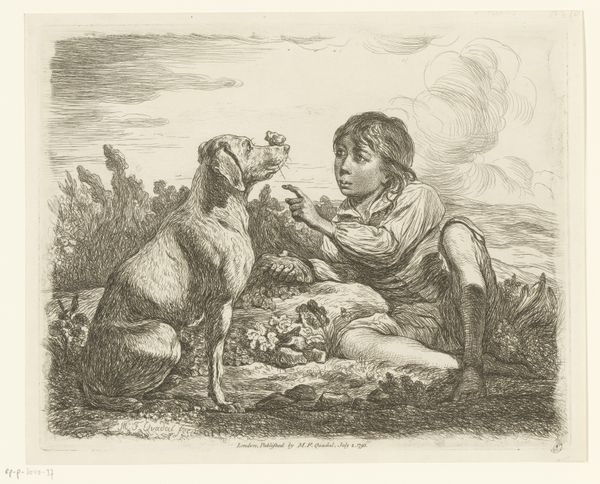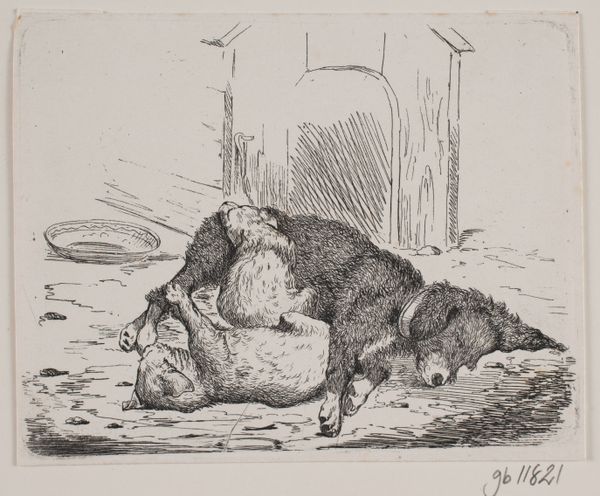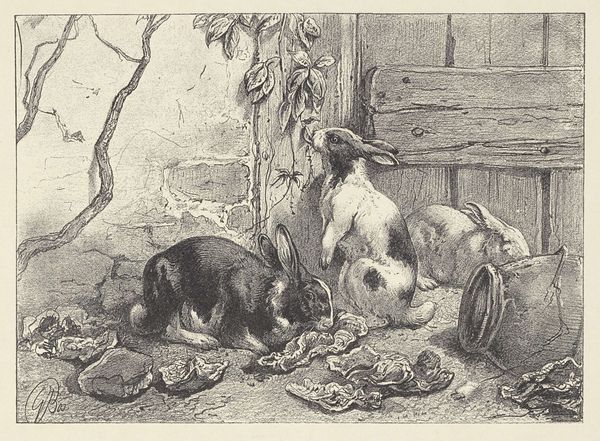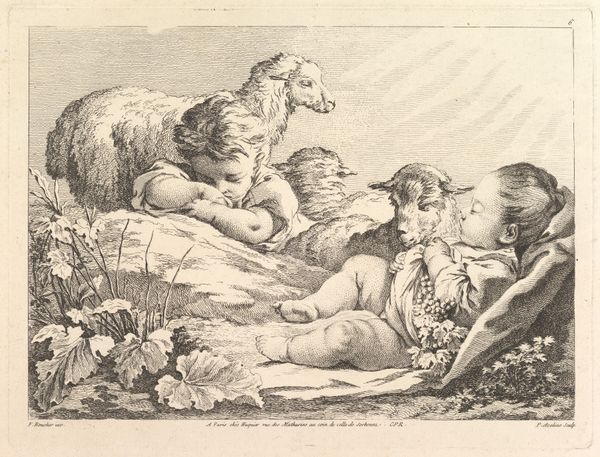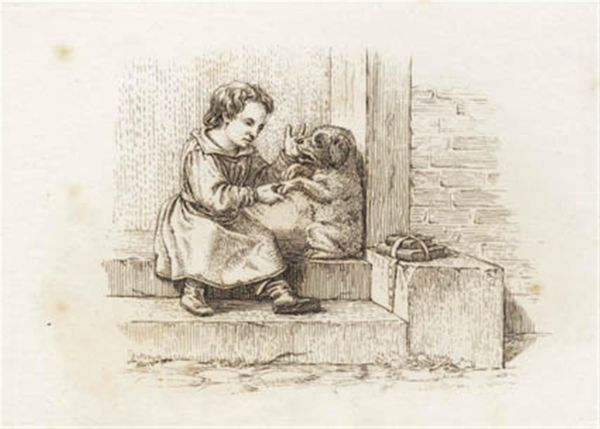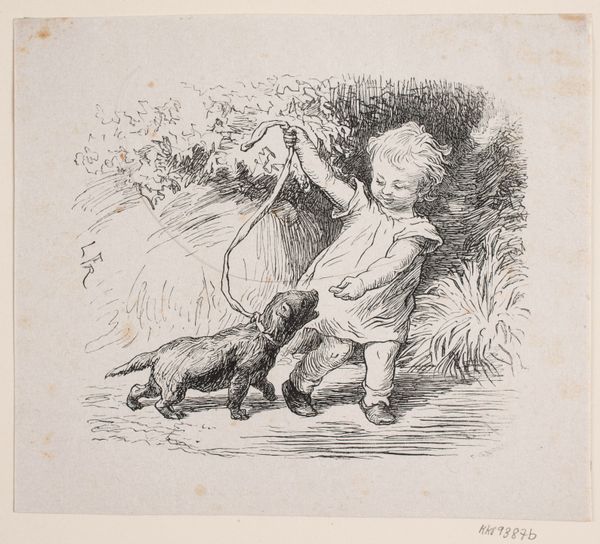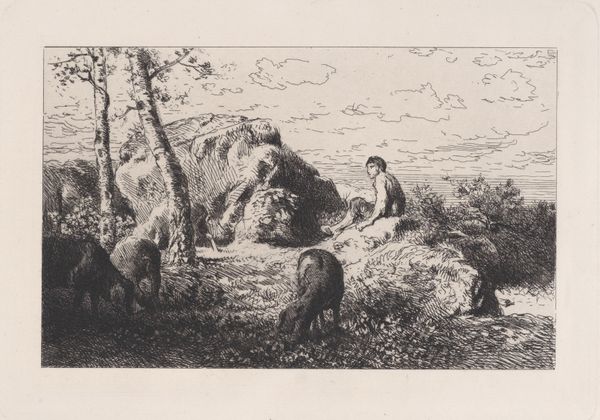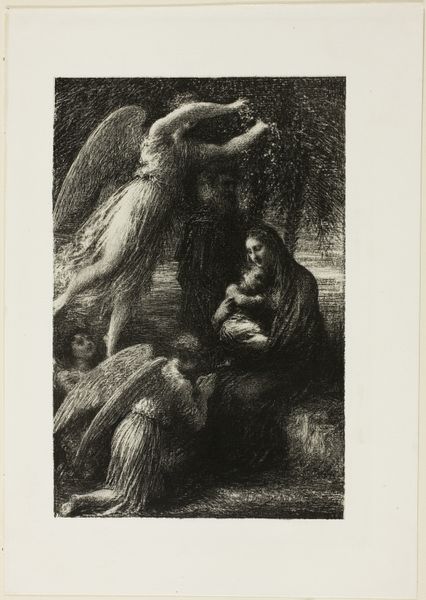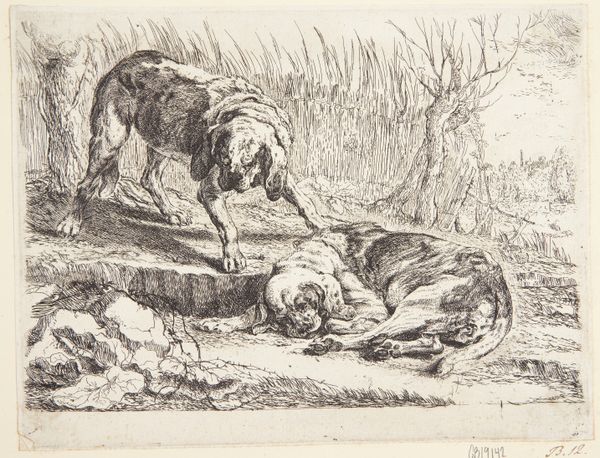
#
pencil drawn
#
amateur sketch
#
facial expression drawing
# print
#
pencil sketch
#
charcoal drawing
#
portrait reference
#
pencil drawing
#
animal drawing portrait
#
portrait drawing
#
digital portrait
Dimensions: image: 152 x 226 mm sheet: 332 x 410 mm
Copyright: National Gallery of Art: CC0 1.0
Editor: Ethel Magafan’s “Young Calf,” created in 1938 and rendered as a print, strikes me with its quiet intimacy. The gentle hatching and soft focus really capture a tender moment. What visual elements stand out to you, and how do they shape our understanding? Curator: Notice first how the artist utilizes a limited tonal range. The composition relies almost entirely on variations in the density and direction of the pencil strokes, establishing form and texture. What effect do you think the artist intended? Editor: I suppose the limited palette emphasizes the tactile quality and gentleness. It invites close scrutiny of the textures and shadows. The curves create such soothing forms. Curator: Indeed. Magafan masterfully orchestrates a symphony of curved lines, particularly within the calf’s form and the figures surrounding it. Note how these undulating contours seamlessly blend the subjects. How might these compositional decisions direct our reading of the subject matter? Editor: The merging shapes create a feeling of protection. Perhaps the formal qualities emphasize closeness, almost a huddle between the figures. It's pretty neat how they become almost a single form. Curator: Precisely. The interplay of dark and light, rendered through delicate hatching, articulates volume and shadow. Do you notice how the consistent lighting throughout lends the image an overall harmony, a self-contained world almost? Editor: Yes! So by looking closely at the line, form, and tonal range, we reveal a real harmony within this modest print. It makes you want to study every detail of it! Curator: And the limitations of the print medium guide how we perceive the composition in a new light. These deliberate compositional decisions generate layers of visual experience.
Comments
No comments
Be the first to comment and join the conversation on the ultimate creative platform.
